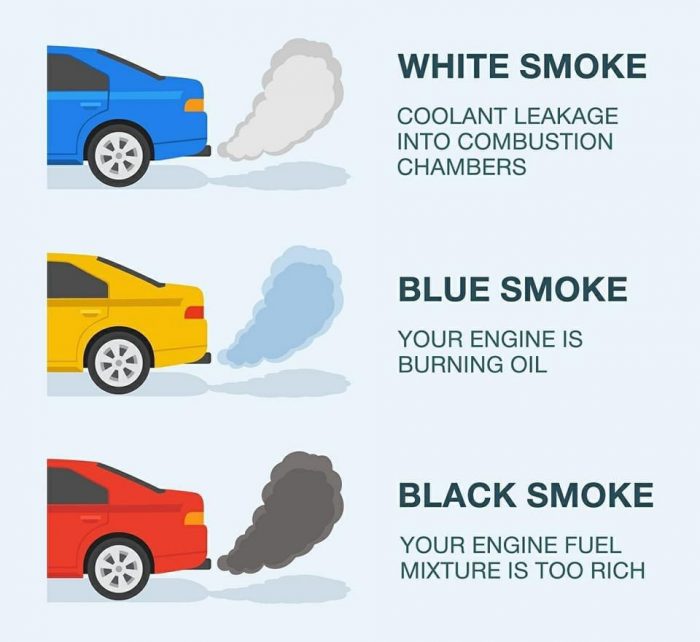
A car’s exhaust, which is usually located under the vehicle and in front of the rear wheels, is a primary source of emissions. These emissions come from burning fuel in cylinders during combustion and can contain carbon monoxide (CO), hydrocarbons (HC) and nitrogen oxides (NOx). The amount of these chemicals released into the air depends on several factors including engine load, operating temperature, ignition timing characteristics and air/fuel ratio.
White Smoke
White smoke is usually caused by coolant leaking into the combustion chambers. It can be caused by a blown head gasket, cracked head, or a loose thermostat. White smoke can also be caused by a leaky water pump, or a bad head gasket. If you’re experiencing white exhaust smoke from your car or truck’s tailpipe (or even from under the hood), it’s time to take it in for service!
Black Smoke
Black smoke is usually caused by a rich fuel mixture, which occurs when the engine’s air-to-fuel ratio gets out of balance. This can be caused by dirty injectors or a clogged air filter that restricts airflow into your engine. To find the cause of black smoke, you need to check these parts:
- Fuel injectors (the part that sprays gas into your engine)
- The fuel filter (the part that keeps dirt out of your gas tank)
If either one of these parts needs replacing and you do so, you should see an improvement in how much black smoke there is coming from your exhaust pipe after driving for a while. If not, there may be something else wrong with your car’s engine–for example:
Blue Smoke
Blue smoke is a sign that the engine is burning oil. This can be caused by a leaking head gasket or piston rings not sealing correctly, which allows excess oil to enter the combustion chamber. If you see blue smoke coming from your tailpipe, have your vehicle inspected immediately because it may not be safe to drive until repairs are made to prevent further damage to your engine
If you see white smoke coming from your car’s exhaust, it could be a sign that coolant has leaked into the combustion chambers. This can be caused by a faulty head gasket or cylinder head or internal engine damage. If you see blue smoke coming from your car’s exhaust, this is usually due to oil burning in the engine (as opposed to being rich in fuel). It could also mean that there is too much oil in the combustion chamber and not enough air for proper combustion, which causes carbon buildup on valves and piston rings. This problem tends to occur more often when vehicles are driven hard or over long distances at high speeds because they use more gasoline per mile than slower speeds do. The excess heat generated by these conditions causes more of it to evaporate into steam rather than being burned as fuel; thus leading us back around again: blue means too much oil! The color of car exhaust smoke is important, as it can tell you what’s going on with your engine. If you see white smoke coming from the tailpipe, there may be an issue with coolant or oil leaking into your intake manifold. Black smoke indicates that something has burned in the engine; this could be either oil or fuel vapors from worn piston rings or valve seals leaking into the exhaust system. Blue smoke indicates that there’s something wrong with either the timing belt tensioner or camshaft bearing (which would cause excessive wear on parts).
